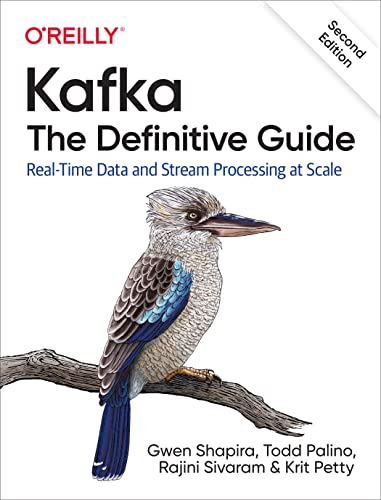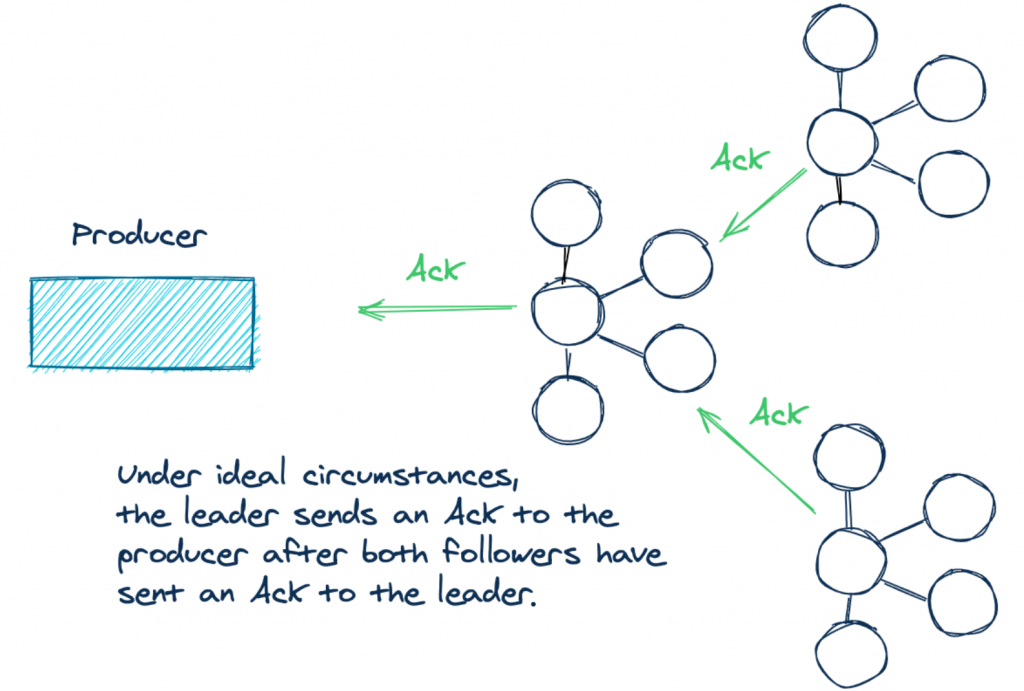我们往Kafka发送消息时一般都是将消息封装到KeyedMessage类中:
val message = new KeyedMessage[String, String](topic, key, content) producer.send(message)
Kafka会根据传进来的key计算其分区ID。但是这个Key可以不传,根据Kafka的官方文档描述:如果key为null,那么Producer将会把这条消息发送给随机的一个Partition。
If the key is null, then the Producer will assign the message to a random Partition.
这句话从字面上理解是每条消息只要没有设置key(null),那么这条消息就会随机发送给一个Partition。但是代码实现是这么做的么(肯定不是,否则就没有这篇文章)?我们来看看Kafka是如何计算Partition ID的:
private def getPartition(topic: String, key: Any,
topicPartitionList: Seq[PartitionAndLeader]): Int = {
val numPartitions = topicPartitionList.size
if(numPartitions <= 0)
throw new UnknownTopicOrPartitionException("Topic " + topic + " doesn't exist")
val partition =
if(key == null) {
// If the key is null, we don't really need a partitioner
// So we look up in the send partition cache for the
// topic to decide the target partition
val id = sendPartitionPerTopicCache.get(topic)
id match {
case Some(partitionId) =>
// directly return the partitionId without checking availability
// of the leader, since we want to postpone the failure until
// the send operation anyways
partitionId
case None =>
val availablePartitions = topicPartitionList
.filter(_.leaderBrokerIdOpt.isDefined)
if (availablePartitions.isEmpty)
throw new LeaderNotAvailableException("No
leader for any partition in topic " + topic)
val index = Utils.abs(Random.nextInt) % availablePartitions.size
val partitionId = availablePartitions(index).partitionId
sendPartitionPerTopicCache.put(topic, partitionId)
partitionId
}
} else
partitioner.partition(key, numPartitions)
if(partition < 0 || partition >= numPartitions)
throw new UnknownTopicOrPartitionException("Invalid partition id: "
+ partition + " for topic " + topic
+ "; Valid values are in the inclusive range of [0, "
+ (numPartitions-1) + "]")
trace("Assigning message of topic %s and key %s to a selected partition %d
".format(topic, if (key == null) "[none]" else key.toString, partition))
partition
}
从上面的代码可以看出,如果key == null,则从sendPartitionPerTopicCache(sendPartitionPerTopicCache的类型是HashMap.empty[String, Int])中获取分区ID,如果找到了就直接用这个分区ID;否则随机去选择一个partitionId,并将partitionId存放到sendPartitionPerTopicCache中去。而且sendPartitionPerTopicCache是每隔topic.metadata.refresh.interval.ms(这个参数是不是很熟悉?昨天在《Kafka Producer是如何动态感知Topic分区数变化》文章中首次介绍了这个参数)时间才会清空的:
if (topicMetadataRefreshInterval >= 0 &&
SystemTime.milliseconds - lastTopicMetadataRefreshTime >
topicMetadataRefreshInterval) {
Utils.swallowError(brokerPartitionInfo
.updateInfo(topicMetadataToRefresh.toSet, correlationId.getAndIncrement))
sendPartitionPerTopicCache.clear()
topicMetadataToRefresh.clear
lastTopicMetadataRefreshTime = SystemTime.milliseconds
}
也就是说在key为null的情况下,Kafka并不是每条消息都随机选择一个Partition;而是每隔topic.metadata.refresh.interval.ms才会随机选择一次!别被文档所骗啊!
不过LinkedIn工程师Guozhang Wang解释到:本来producer在key为null的情况下每条消息都随机选择一个Partition,但后面改成这种伪随机的以此来减少服务器端的sockets数。
Originally the producer behavior under null-key is "random" random, but
later changed to this "periodic" random to reduce the number of sockets on
the server side: imagine if you have n brokers and m producers where m >>>
n, with random random distribution each server will need to maintain a
socket with each of the m producers.We realized that this change IS misleading and we have changed back to
random random in the new producer released in 0.8.2.
在Kafka new producer上如果Key为null则每条消息都会选择不同的Partition:
if (record.partition() != null) {
// they have given us a partition, use it
if (record.partition() < 0 || record.partition() >= numPartitions)
throw new IllegalArgumentException("Invalid partition given with record: "
+ record.partition()
+ " is not in the range [0..."
+ numPartitions
+ "].");
return record.partition();
} else if (record.key() == null) {
int nextValue = counter.getAndIncrement();
List<PartitionInfo> availablePartitions = cluster
.availablePartitionsForTopic(record.topic());
if (availablePartitions.size() > 0) {
int part = Utils.abs(nextValue) % availablePartitions.size();
return availablePartitions.get(part).partition();
} else {
// no partitions are available, give a non-available partition
return Utils.abs(nextValue) % numPartitions;
}
} else {
// hash the key to choose a partition
return Utils.abs(Utils.murmur2(record.key())) % numPartitions;
}
可以看出这是一种round-robin模式选择分区ID的。
本博客文章除特别声明,全部都是原创!原创文章版权归过往记忆大数据(过往记忆)所有,未经许可不得转载。
本文链接: 【Key为null时Kafka如何选择分区(Partition)】(https://www.iteblog.com/archives/1619.html)







